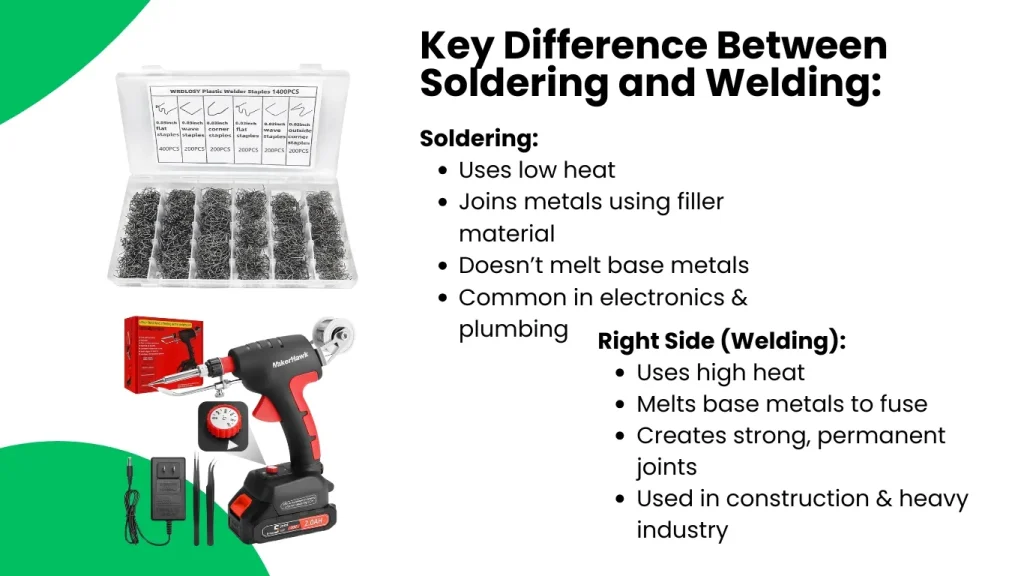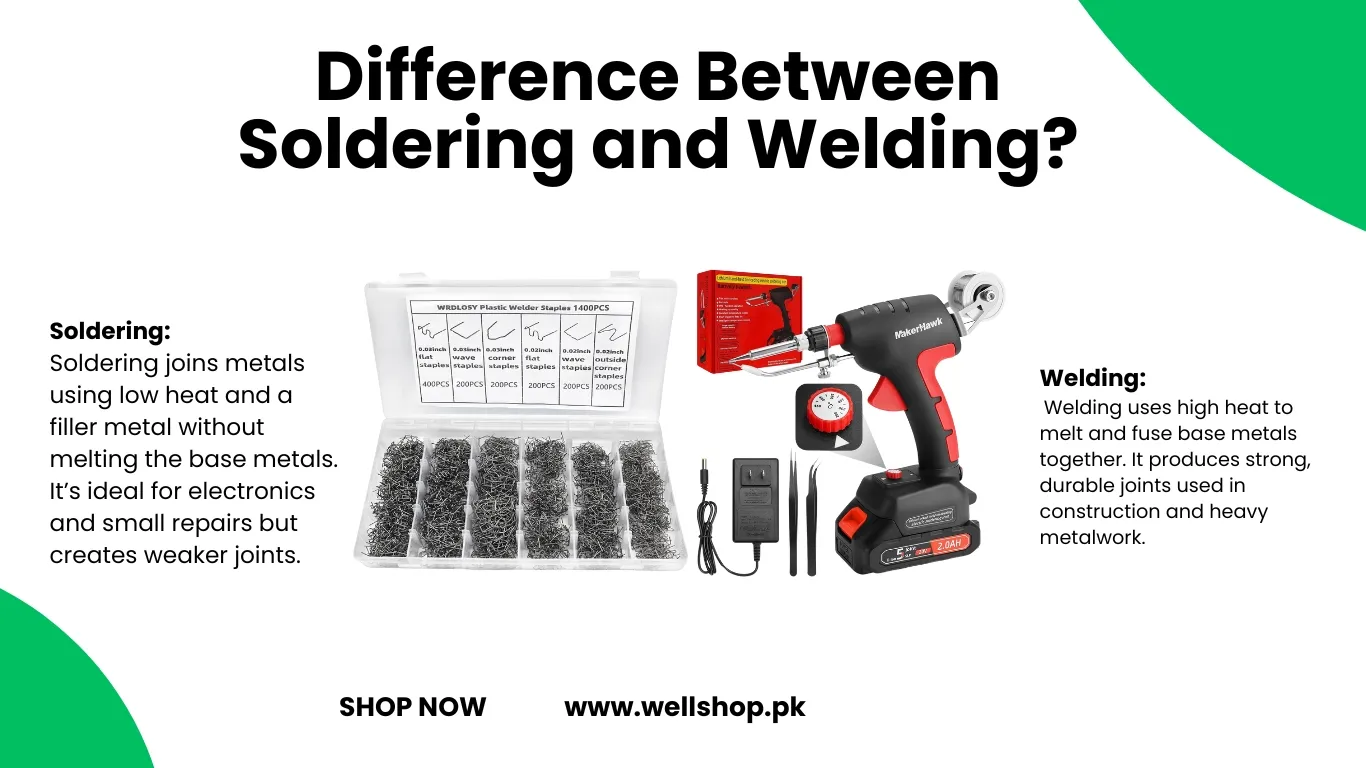The process of joining metal parts can be accomplished in two ways. These are soldering and welding. These might seem alike but there is some difference between soldering and welding. These differences need to be understood. So that people who work on metal projects can do this with ease.
What is Soldering?
Soldering is the technique in which a particular filler metal melts. It’s done to connect two or more metal things. A soldering iron or a flame torch is used for heating the metallic components. Filler metal should be chosen because it has a lower melting point than the workpieces.
Mostly when this metal is molten. It will saturate and flow in between the already-molded metal pieces. When it cools, it creates a formidable bond. It is so tightly hooked to the metal.
What is Welding?
When the metals being joined in the process are mostly melted and partially mixed. The bonding created is the strongest.
The metal pieces partly melt. They fuse with each other as well as with the filling metal as welding is taking place. This makes the welded metal acquire more strength than the base metals.
Key Difference Between Soldering and Welding:
While soldering and welding products both join metal. There are some crucial differences between these two processes.

1. Heat Levels:
Soldering is performed at more favorable low temperatures. When the required effect is achieved by the mere melting of the filler metal. The vast majority of the welding processes use temperatures. It’s high enough to partially melt the metal pieces that will be connected. To strike with enough power, a welder requires temperatures much higher.
2. Filler Metals:
Soldering involves fillers that have a lower remelting temperature. The filler usually also liquifies when the base metals melt and can be fused together.
3. Joint Strength:
The iron-based metals are welded. While some are joined by soldering. This joint may not be as strong as welding. Welds, which are more powerful, are the metal pieces. They are actually melted and fused into one solid entity.
4. Material Thickness:
In this way soldering requires a lower heat for the thinner, lighter metals. While the welding technique requires the mounting heat for the thicker, heavier metals. Soldering has restrictions only for the combination of smaller, lighter metals or materials.
5. Equipment:
Soldering can be achieved with something as simple as a soldering iron or just a small flame. One of the main differences between welding and other types of traditional manufacturing processes, like machining, is that welding necessitates heavy-duty tools such as a welding torch and safety gear.
6. Applications:
Soldering is an easy act to be done for electronics jewelry, stained glass, and metal models. Although welding does not best suit precise or fine construction tasks, such as the creation of tools and machines, it comes in handy during metalworking, automobile manufacturing, and other heavy-duty industrial tasks.
When To Use Each?
Areas where soldering is best suited include production of things made of thin and lightweight metals. It requires weak tension for the soldering part. Besides, it saves time and effort and can be conducted at home.
Only applies in the case of heavy-duty industrial applications where thicker materials are used and only seems to provide maximum joint strength and durability. On the other hand, it is a very specific job that nevertheless demands experts, super-strong protection, and sometimes it can be dangerous.
Conclusion:
When it comes to the difference between soldering and welding. They might be similar in the fact that both of them join metals. But they definitely work differently. In soldering, you bring the joint points together at low heat with the filler metal to adhere the hosts. Welding melts and fuses the basic metal piece of work when exposed to extremely hot temperatures.
Becoming aware of their disparities provides you with a choice of the particular welding method that is most suitable to you, depending on your needs.
